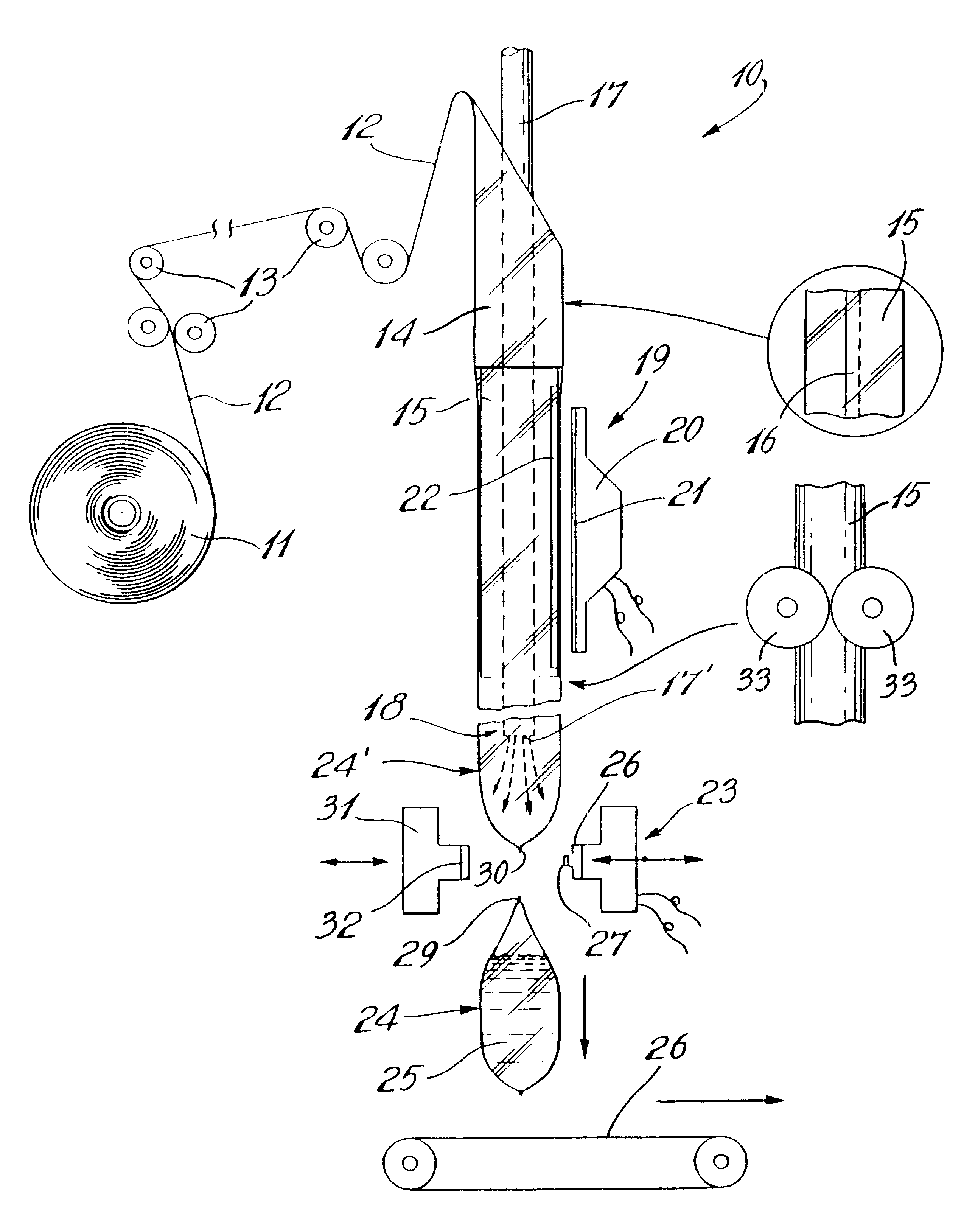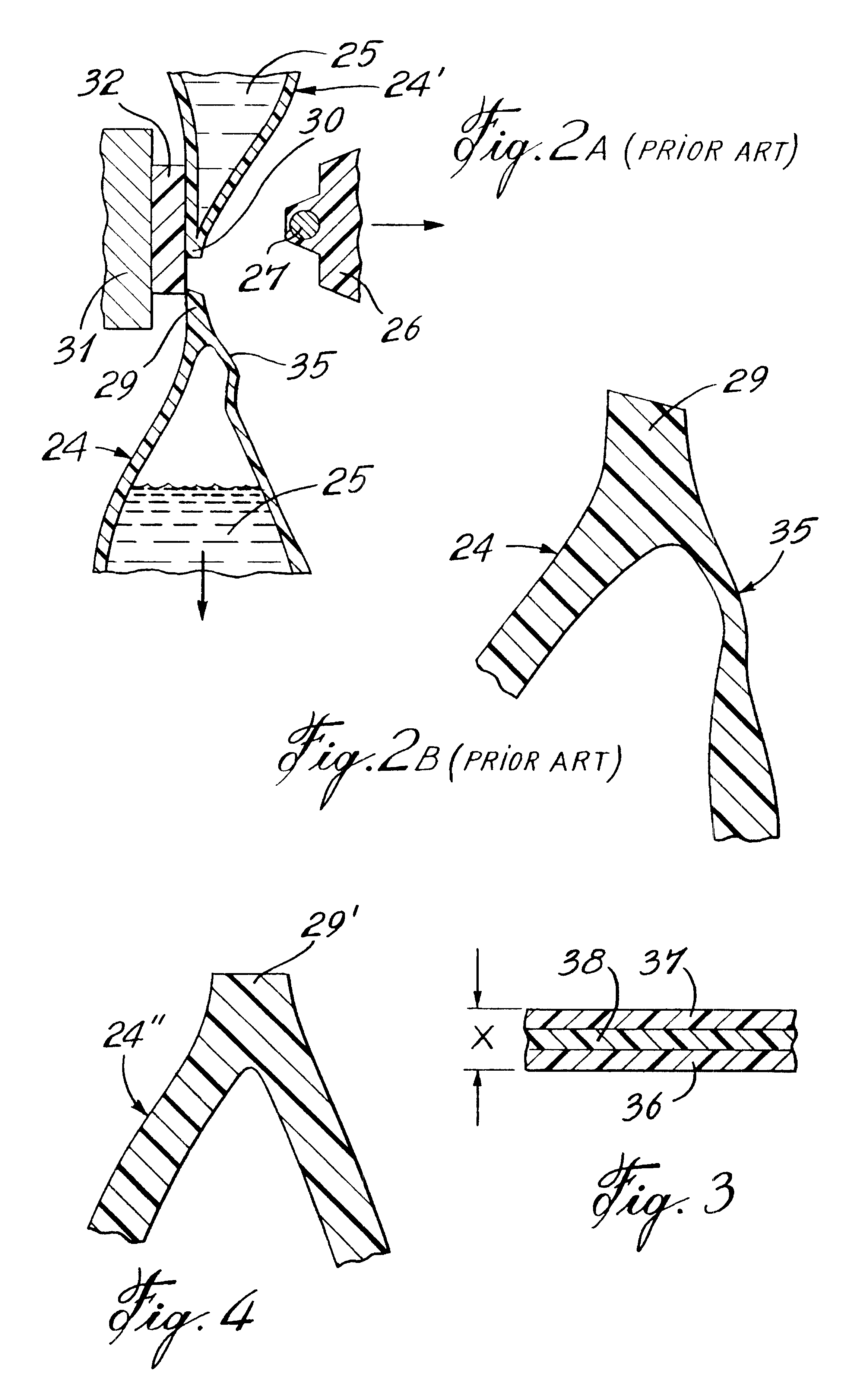Use of a multilayer film in a high-speed pouch forming, sealing and filling machine, and method of operation
a multi-layer film and pouch sealing technology, applied in the direction of containers, tray containers, packaged goods, etc., can solve the problems of standard film, a relatively short useful life of sealing jaws, and operation requires a certain amount of electrical energy
- Summary
- Abstract
- Description
- Claims
- Application Information
AI Technical Summary
Benefits of technology
Problems solved by technology
Method used
Image
Examples
Embodiment Construction
In the present application, the term "polyolefin" refers to any polymerized olefin, which can be linear, branched, cyclic, aromatic, aliphatic, substituted or unsubstituted.
Further, the phrase "ethylene / .alpha.-olefin" refers to heterogeneous materials as linear low density polyethylene (LLDPE) and very low and ultra-low density polyethylene (VLDPE and ULDPE); and homogeneous polymers such as metallocene catalyzed polymers. These materials are well known to anyone of ordinary skill in the art and include copolymers of ethylene with one or more comonomers selected from C.sub.4 -C.sub.10 .alpha.-olefins, like 1-butene, 1-hexene, 1-octene, in which the molecules of the copolymers comprise long chains with relatively few side chain branches or cross-linked structures. This molecular structure is to be contrasted with conventional low or medium density polyethylenes which are most highly branched than their respective counterparts. Examples of suitable commercial ethylene / .alpha.-olefin ...
PUM
| Property | Measurement | Unit |
|---|---|---|
| thickness | aaaaa | aaaaa |
| thickness | aaaaa | aaaaa |
| density | aaaaa | aaaaa |
Abstract
Description
Claims
Application Information
 Login to View More
Login to View More - R&D
- Intellectual Property
- Life Sciences
- Materials
- Tech Scout
- Unparalleled Data Quality
- Higher Quality Content
- 60% Fewer Hallucinations
Browse by: Latest US Patents, China's latest patents, Technical Efficacy Thesaurus, Application Domain, Technology Topic, Popular Technical Reports.
© 2025 PatSnap. All rights reserved.Legal|Privacy policy|Modern Slavery Act Transparency Statement|Sitemap|About US| Contact US: help@patsnap.com



